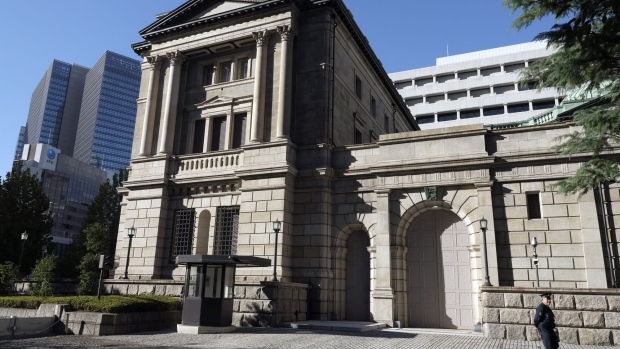Mar 8, 2024
BOJ Mulls Scrapping Yield Curve Control Program, Jiji Says
, Bloomberg News

(Bloomberg) -- The Bank of Japan is considering scrapping its yield curve control program and instead indicating in advance the amount of government bonds it plans to purchase, Jiji Press reported, without saying where it got the information.
It will stop its program to guide benchmark 10-year government bond yields to around 0%, as part of its efforts to normalize monetary policy, according to Jiji. The bank will decide on that and ending negative interest rates as soon as the next policy meeting concluding on March 19, the report said.
Expectations are growing that the BOJ will raise interest rates for the first time since 2007 as soon as this month, as higher wages and steady inflation boost the case for the policy move. Speculation that a BOJ rate increase is imminent weighed on bonds, with the benchmark 10-year yield rising 2 basis points this week to 0.73%, while the yen strengthened 2.1% during the period to 147.06 per dollar, marking the biggest weekly gain this year.
Volatile overnight indexed swaps had the odds of a BOJ rate hike by March 19 at about 67% as of Friday, compared with around 26% at the end of February, Bloomberg-compiled data show. BOJ officials have also recently increasingly been indicating that the rate move is nearing, with Board Member Hajime Takata saying that the bank’s price target is coming into sight.
The new framework would target the volume of purchases, rather than the yield, according to Jiji. The BOJ plans to buy just under ¥6 trillion ($41 billion) of bonds a month, around the current level for the time being, Jiji reported.
The bank introduced the yield curve control program on previous governor Haruhiko Kuroda’s watch, aiming to keep yields low even for longer-dated bonds to encourage consumers to spend and businesses to invest.
But the policy has been met with criticism including that it distorts market pricing, at a time when the BOJ holds more than half of the nation’s government bonds, and that it undermines the value of the yen.
The central bank has already loosened its grip on debt yields, saying at its October meeting that the 1% level was now a reference point for the 10-year bond rather a line in the sand.
(Adds a chart and more background.)
©2024 Bloomberg L.P.






